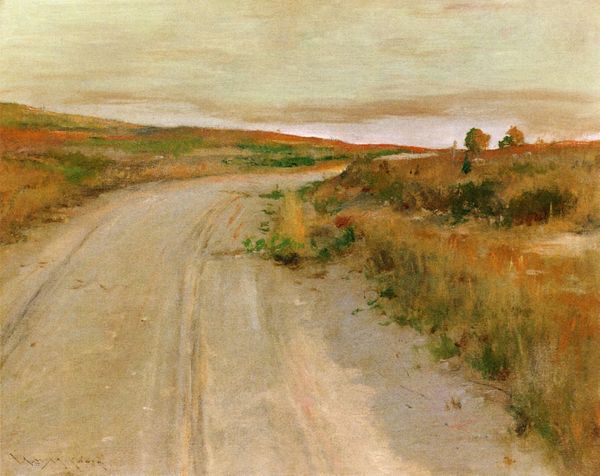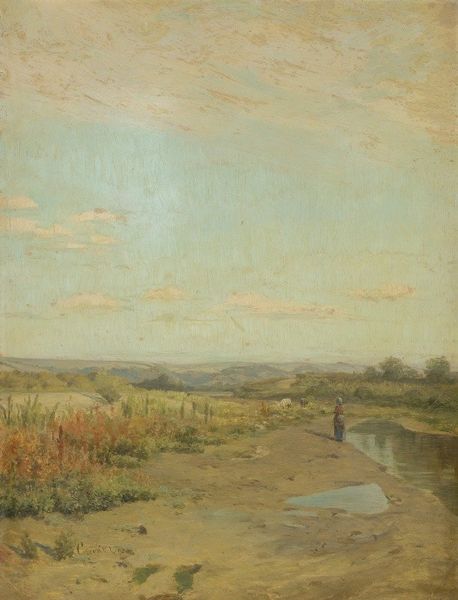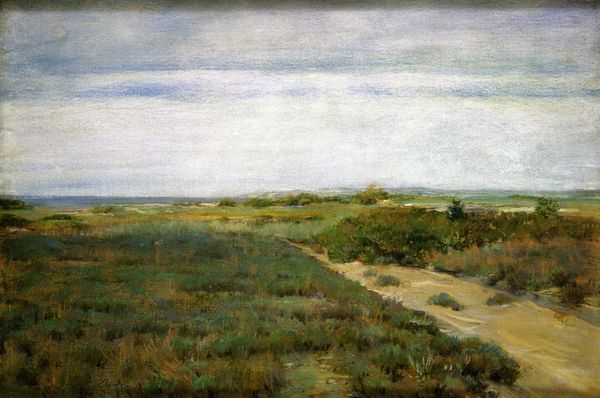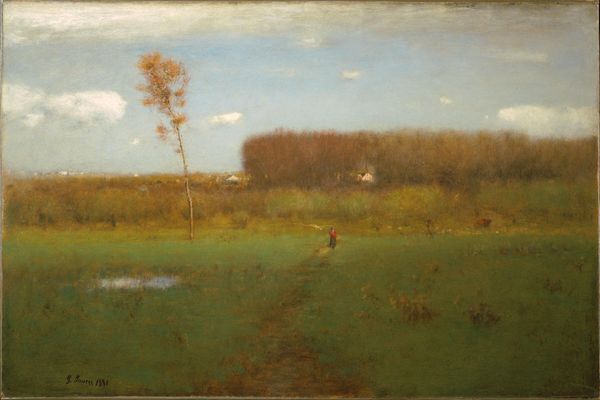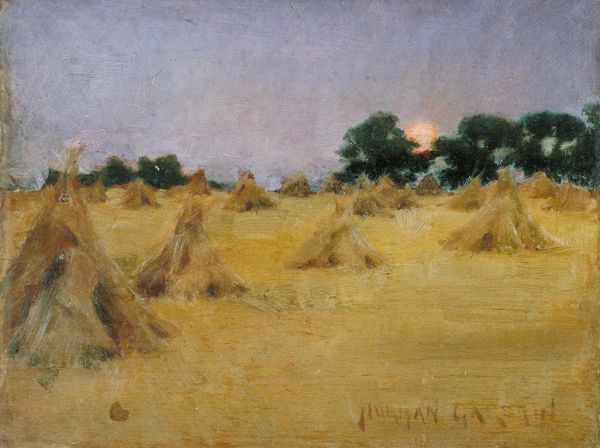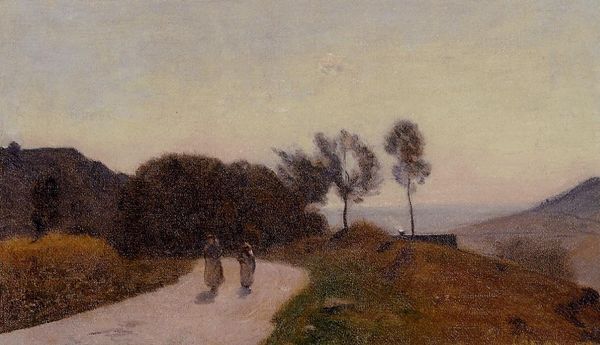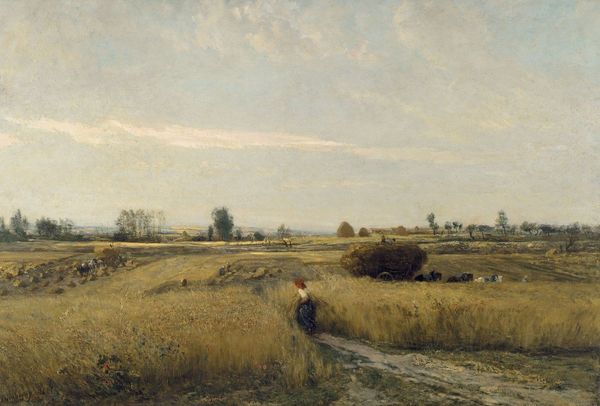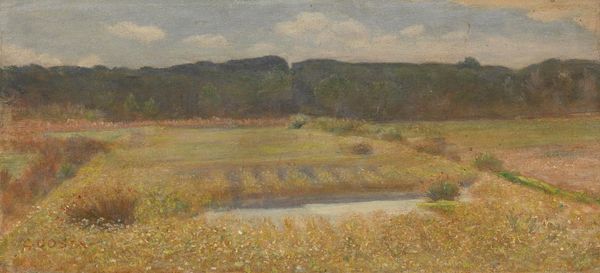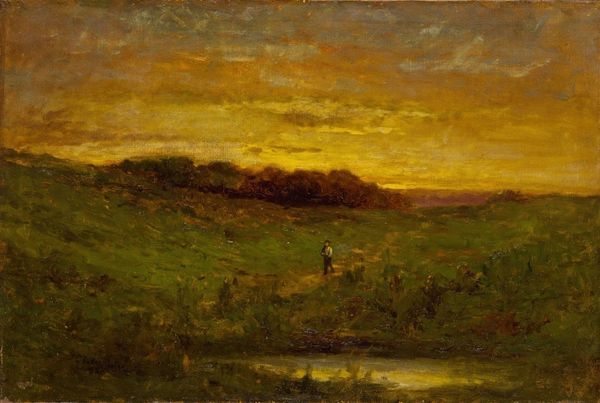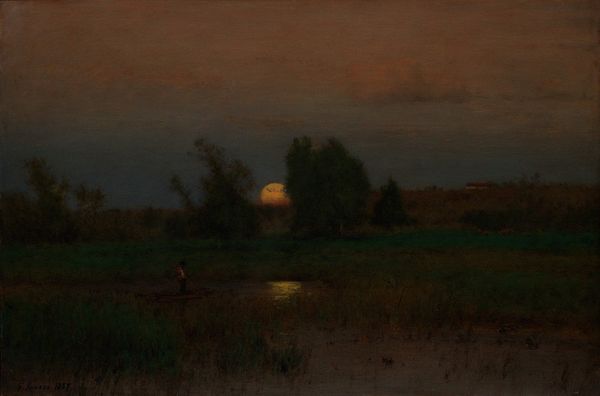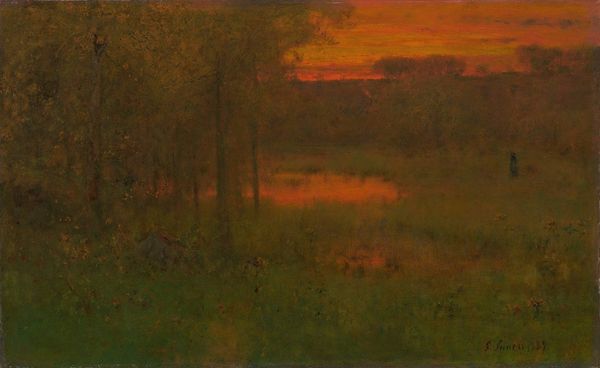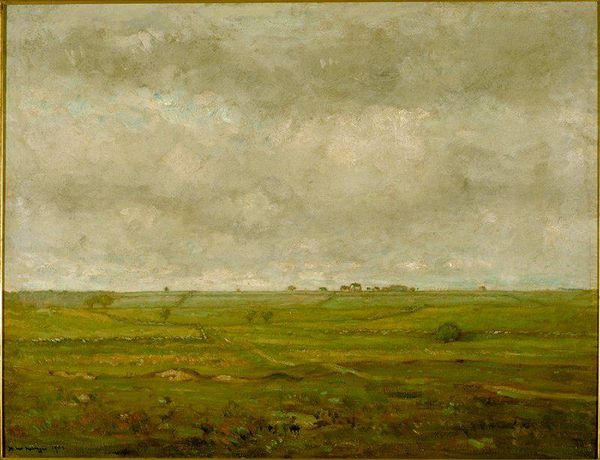
Copyright: Public domain
Curator: Here we have David Davies' "Moonrise," a watercolor from 1894. It depicts a quiet, rural landscape bathed in soft moonlight. Editor: My first impression is one of quiet solitude. The muted tones and the vast open space create a sense of stillness, almost melancholic. Curator: Davies was part of the Heidelberg School, and he really pushed plein-air painting here, capturing the nuances of light and atmosphere through watercolor. Think about the availability and cost of watercolors, making landscape paintings of this kind more readily accessible for domestic display in working-class households in contrast to large scale, oil-based landscapes produced and bought by wealthy elites. Editor: That’s interesting. You’re right. He wasn’t trying to capture this vista in oil. But it feels so romantic! I see that stark moon hanging low and casting its eerie glow. There’s also a track marked into the grass as if people had used it to come and enjoy the rising of the moon on this horizon. Curator: I see this artwork through the lens of artistic training too, with attention to craft, because during that period, watercolor societies were beginning to exhibit internationally. Looking at how this was displayed gives a wider impression of how culture and society affect art production and reception. The Heidelberg School pushed its works on the domestic and international stage, which, inevitably, influenced the way works such as Moonrise, got perceived. Editor: Certainly, the historical context shaped how these paintings were received. But standing here, viewing it now, detached from its initial presentation, I appreciate the way it evokes such a strong emotional response to that one place at that one time of night, to the romanticism and the melancholic sensibility it conveys through such sparse use of tones. Curator: Thinking about it this way does push us to think about the art beyond the technical components! Perhaps it offers more of a viewing platform to analyse these artistic choices which shape the viewers opinions about works in the future. Editor: Precisely. It’s in understanding both the craft and the context, but it also allows each of us to decide individually on how and why we might take pleasure in what art can offer us.
Comments
No comments
Be the first to comment and join the conversation on the ultimate creative platform.
